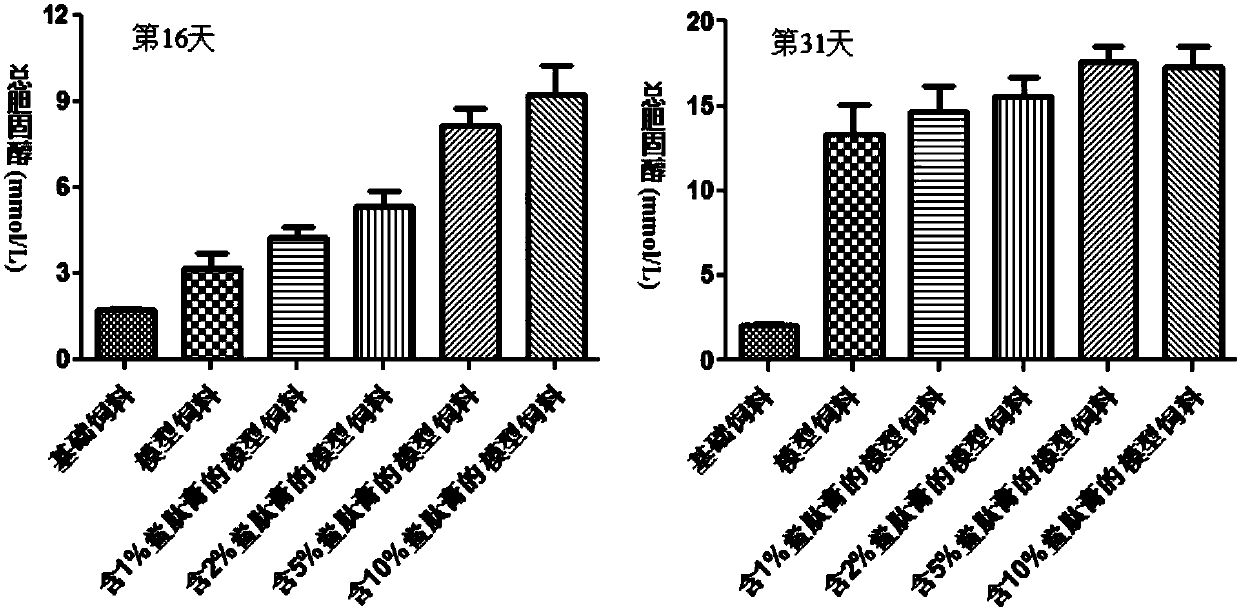Preparation method, product and application of horseshoe crab peptide cream
A technology of limulus peptide paste and animal protease, which is applied in the fields of application, food science, animal feed, etc., can solve the problems of reducing feed intake, anorexia of experimental mice, and affecting the stability and reliability of experiments, so as to achieve convenient implementation and reduce Pollution, the effect of easy large-scale production
- Summary
- Abstract
- Description
- Claims
- Application Information
AI Technical Summary
Problems solved by technology
Method used
Image
Examples
Embodiment 1
[0032] Embodiment 1: preparation limulus peptide cream
[0033] (1) The cleaned 5.4 kilograms of horseshoe crabs are cut into 5cm×5cm blocks, sent into the meat harvester to collect meat and seeds, and 3.5 kilograms of meat and seeds are taken;
[0034] (2) 3.5 kilograms of meat and seeds are added to a colloid mill and a small amount of water is obtained to obtain a fine slurry with a fineness of 150 meshes and a concentration of 20%;
[0035] (3) Adjust the pH of the fine slurry to 6.8-7.2 with phosphoric acid, add 180 mg of animal protease and 90 mg of flavor protease, and control the hydrolysis temperature to 53°C for 4 hours.
[0036] (4) After the hydrolysis, heat the temperature to 80°C to kill the enzyme for 10 minutes;
[0037] (5) Concentrate the enzymatic hydrolyzate in vacuum to a water content of 20% to obtain 1 kg of Limulus peptide paste product, which is sealed and packaged.
Embodiment 2
[0038] Embodiment 2: preparation limulus peptide paste
[0039] (1) The cleaned 4.2 kilograms of horseshoe crabs are cut into 5cm×5cm blocks, sent into the meat harvester to collect meat and seeds, and 3.2 kilograms of meat and seeds are taken;
[0040] (2) 3.2 kilograms of meat and seeds are added to a colloid mill and a small amount of water is obtained to obtain a fine slurry with a fineness of 180 meshes and a concentration of 16%;
[0041] (3) Adjust the pH of the fine slurry to 6.8-7.2 with phosphoric acid. Add 160mg animal protease and 80mg flavor protease, control the hydrolysis temperature to 55°C, and the time is 4h.
[0042] (4) After hydrolysis, heat the temperature to 85°C to kill the enzyme for 12 minutes;
[0043] (5) Concentrate the enzymatic hydrolyzate in vacuum to a water content of 35%, to obtain 1 kg of Limulus peptide paste product, which is sealed and packaged.
Embodiment 3
[0044] Embodiment 3: preparation limulus peptide paste
[0045] (1) Cut the cleaned 4.6 kg horseshoe crab into 5cm×5cm blocks, send them into the meat harvester to collect the meat and seeds, and take 3.3 kg of the meat and seeds;
[0046] (2) 3.3 kilograms of meat and seeds are added to a colloid mill and a small amount of water is obtained to obtain a fine slurry with a fineness of 130 meshes and a concentration of 24%;
[0047] (3) Adjust the pH of the fine slurry to 6.8-7.2 with phosphoric acid. Add 170mg animal protease and 85mg flavor protease, control the hydrolysis temperature to 56°C, and the time is 4h.
[0048] (4) After hydrolysis, heat the temperature to 90°C to kill the enzyme for 8 minutes;
[0049] (5) Concentrate the enzymatic hydrolyzate in vacuum to a moisture content of 10%, to obtain 1 kg of Limulus peptide paste product, which is sealed and packaged.
PUM
 Login to View More
Login to View More Abstract
Description
Claims
Application Information
 Login to View More
Login to View More - R&D
- Intellectual Property
- Life Sciences
- Materials
- Tech Scout
- Unparalleled Data Quality
- Higher Quality Content
- 60% Fewer Hallucinations
Browse by: Latest US Patents, China's latest patents, Technical Efficacy Thesaurus, Application Domain, Technology Topic, Popular Technical Reports.
© 2025 PatSnap. All rights reserved.Legal|Privacy policy|Modern Slavery Act Transparency Statement|Sitemap|About US| Contact US: help@patsnap.com



